3D Imaging of Granular Flows
Due to density and opacity, capturing full 3D dynamics of a granular material is a difficult endeavor that requires a specialized and non-intrusive imaging technique. One way to look all the way through a granular material is to immerse the grains in a fluorescent index-matched fluid. A thin laser sheet will then illuminate a single cross-section of the pile. Scanning the laser sheet through the entire pile allows us to then capture a full 3D image of the system. As a whole, this process is known as refractive index matched scanning(RIMS).
After acquiring 3D images, we can then locate, identify, and track almost every individual grain within a dense pile, as well as probe various characteristics of local dynamics.
Publication: J.A. Dijksman, F. Rietz, K.A. Lőrincz, M. van Hecke, and W. Losert, Rev Sci Intstrum 2012 [AIP]
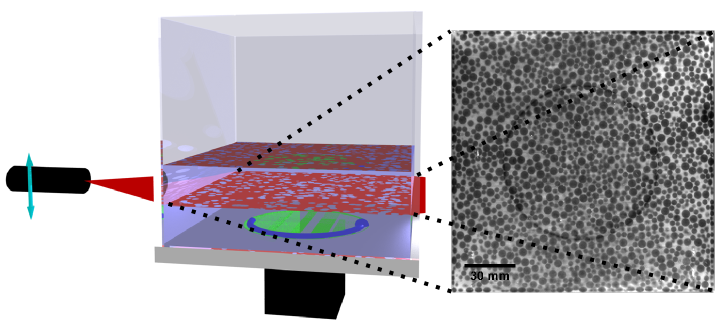
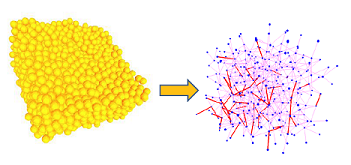
Top: Illustration of the RIMS technique with a typical cross section of a bidisperse material. Bottom: A 3D rendering of a quarter of the pile, and the corresponding contact and broken contact networks.
Reversibility of Granular Rotations under Cyclic Compression
Zackery Benson, PhD Student
Anton Peshkov, Postdoc
Lea Delance, Visiting Masters Student
with Derek C. Richardson (UMD, ASTRO) and Michelle Girvan (UMD,PHYS)
When Granular material is subject to cyclic forcing, the individual grains exhibit reversible motion. However, when measuring the orientation, we find that their rotational motion is not reversible. Such irreversibility could lead to energy dissipation, system memory, and collective motion on multiple scales. RIMS imaging allows us to measure the dynamics of this system over many cycles, and lay the framework for a theory on collective granular rotations.
Our experiment consists of a rectangular compression cell with transparent walls to allow a sheet laser to illuminate the sample. Acrylic beads with perpendicular holes are used as our granular media and Triton X100 is the index matching fluid used. The setup allows for detailed images of up to 12 layers of granular material (~20,000 grains).
Supported by the National Science Foundation
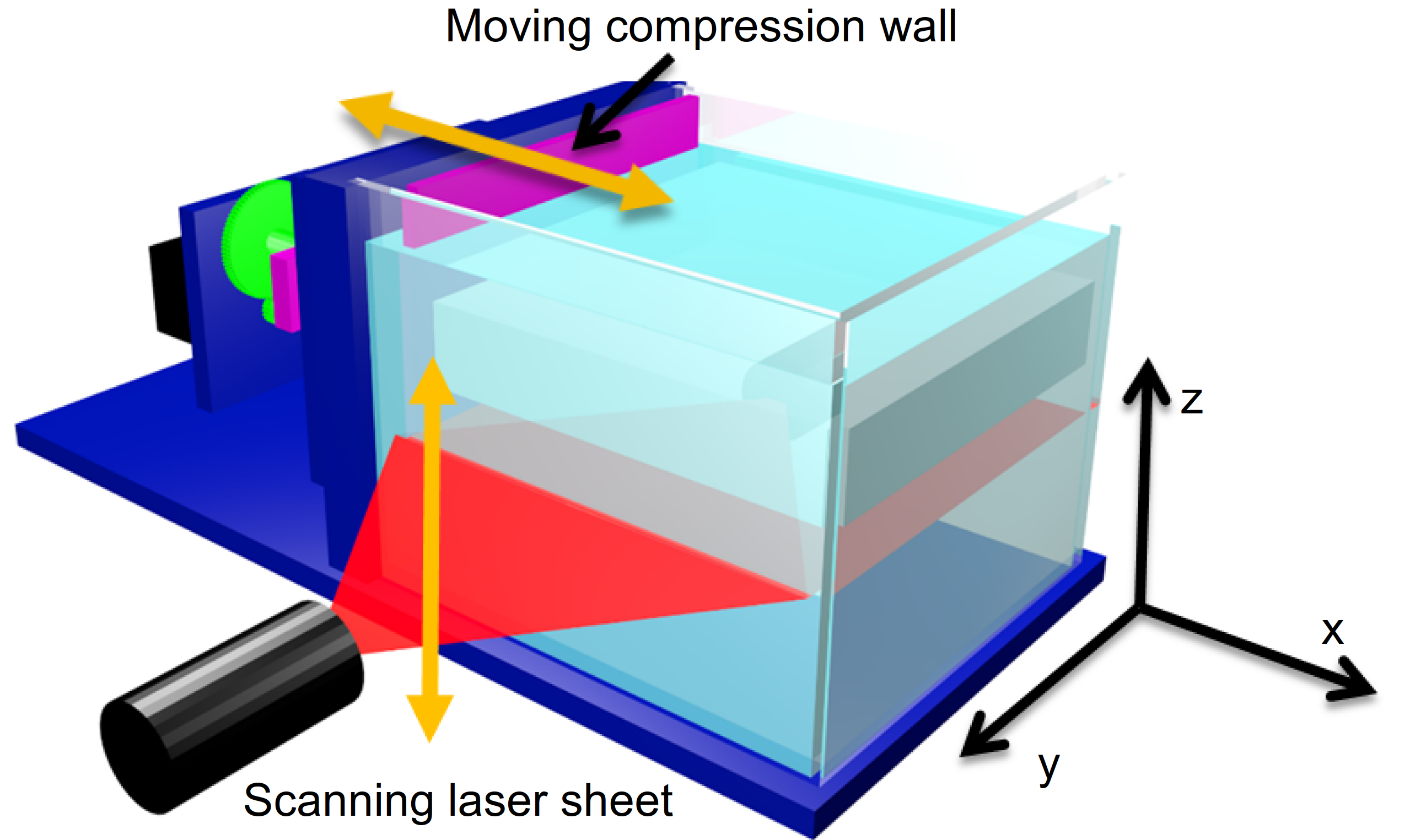
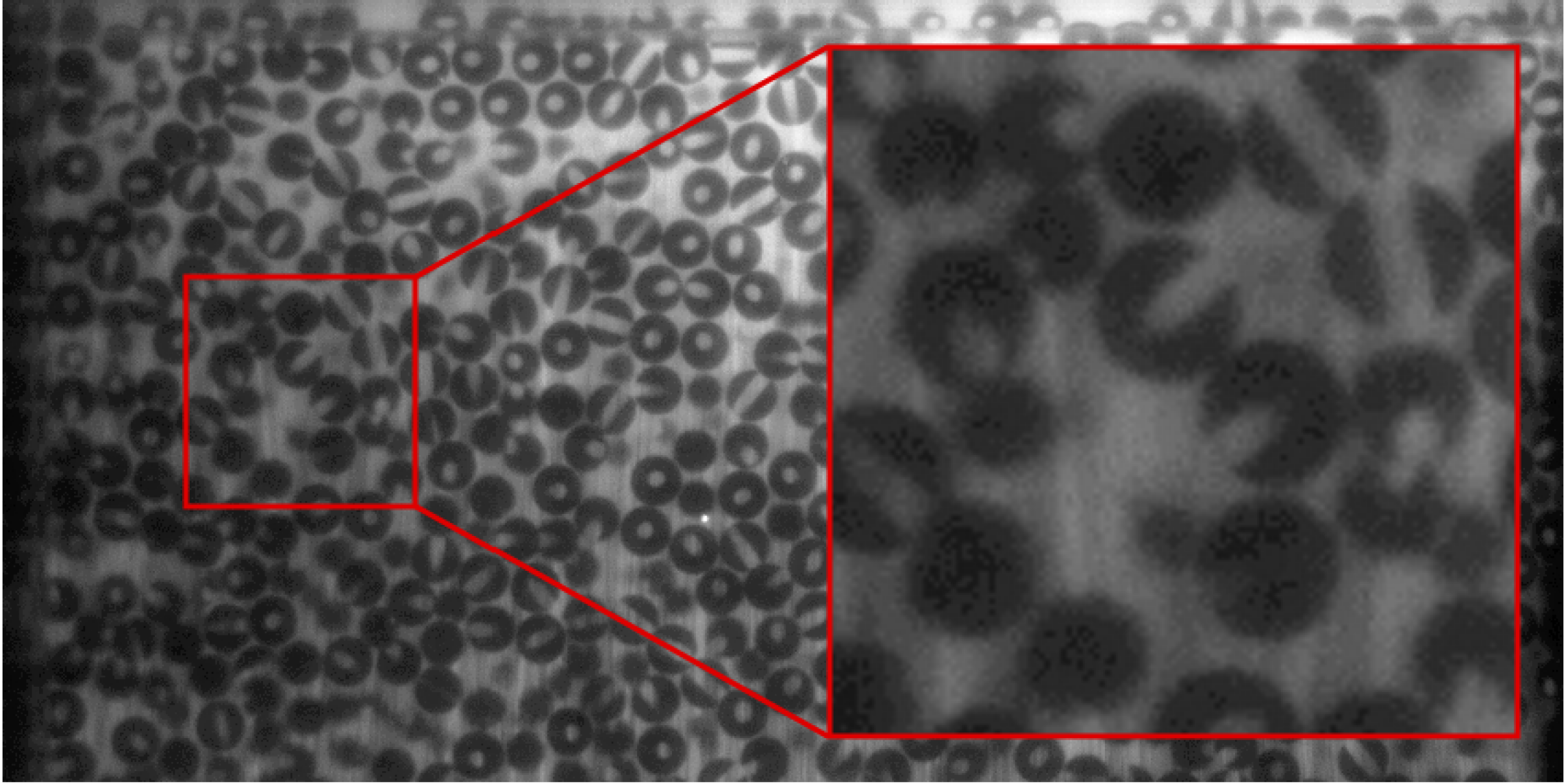
Top: Schematic of the experimental apparatus. Bottom: Sample image of the granular material.
Rotational Motion within Granular Matter
Zackery Benson, PhD Student
Anton Peshkov, Postdoc
Lea Delance, Visiting Masters Student
Matt Harrington, PhD Alumnus
Michael Lin, Undergraduate Alumnus, Physics
with Derek C. Richardson (UMD, ASTRO) and Michelle Girvan (UMD,PHYS)
While much of the granular literature is limited to translational motion of individual grains, there is increasing interest in capturing rotational motion of both spheres and anisotropic particles. By drilling two perpendicular holes in spheres or using granular rods, we are able to additionally capture rotational dynamics in 3D. This allows us to address questions of how correlated granular rotational motion is, how quickly a shear zone becomes rotationally coupled or ordered, and the role that rotations within and across neighborhoods plays in bulk flows.
Publication: M. Harrington, M. Lin, K.N. Nordstrom, and W. Losert, Granular Matter 2014 [Springer]
Supported by the National Science Foundation
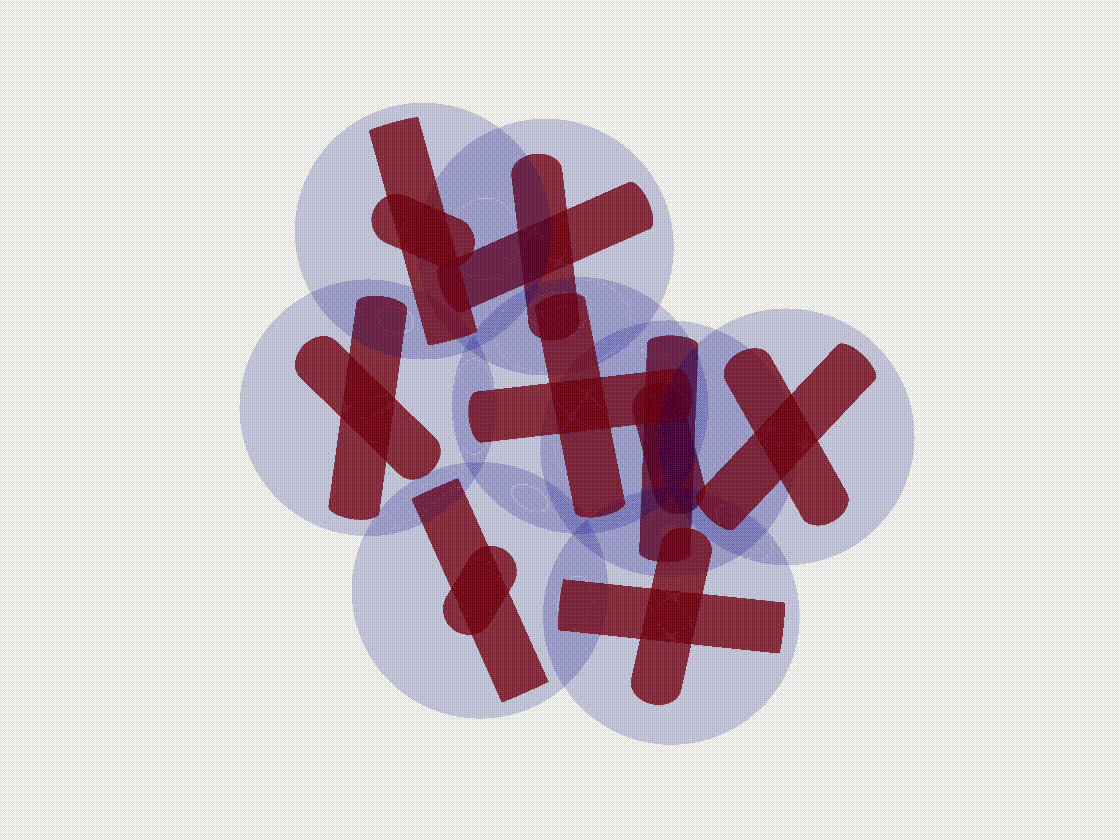
Experimentally tracked orientations (red cross) and positions (blue sphere) of a bead and its neighbors.
DEM Simulations of Granular Rotations
Zackery Benson, PhD Student
Anton Peshkov, Postdoc
with Derek C. Richardson (UMD, ASTRO) and Michelle Girvan (UMD,PHYS)
In parrallel with our RIMS experiments, we run DEM Simulations for more control over material properties as well as gain insight into the interparticle force networks that are critical for a compressive understanding of this complex system. Since we are interested in collective rotations, the material properties such as friction have a substantial impact in the dynamics of the system. Conversely, we can use our experimental data to affirm that the friction models commonly used in DEM simulations provide real physical results.
Simulation code was developed in house by D.C. Richardson et al. We use a soft-sphere model with the tangential forces including static, rolling and twisting friction. Spring constants between particles were chosen to allow for no greater than 1% overlap.
Supported by the National Science Foundation
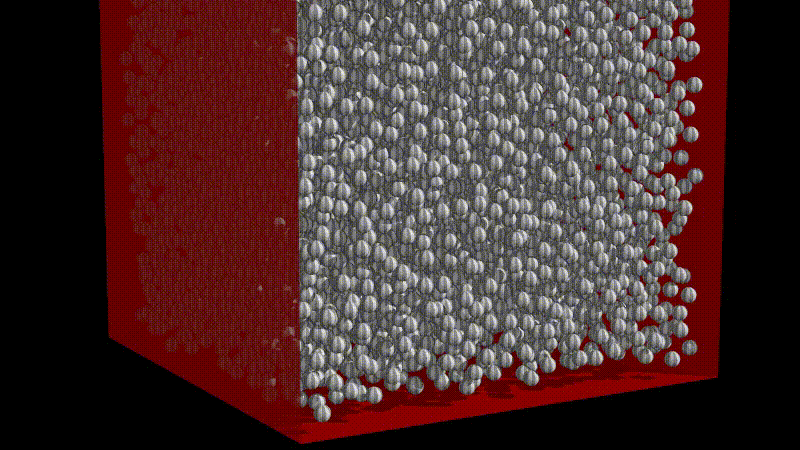
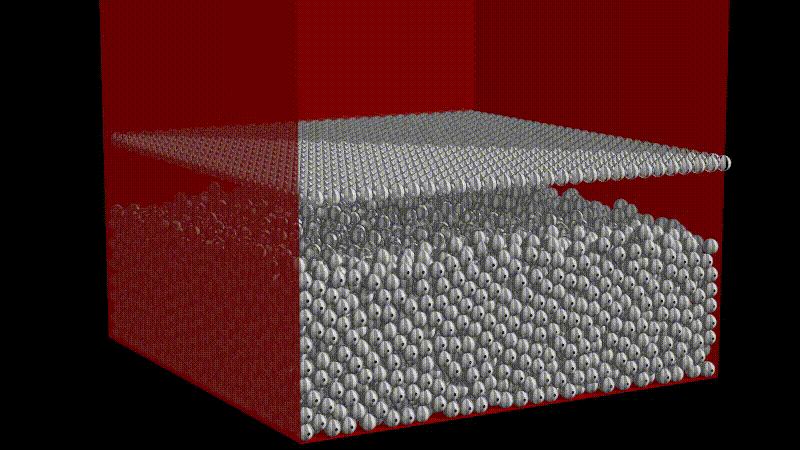
Top: Dropping of 20,000 simulated spheres into a container used as initial conditions for our system Bottom: Dropping of the top weight to control the pressure of the simulation.
Maryland Day: What Grown-ups Learn by Playing with Sandpiles
Lab Outreach
For the past several years, the Losert Lab has put on demonstrations of the physics of granular materials at Maryland Day, an annual university-wide outreach event held at the end of April. Many of these complex and novel phenomena are demonstrated with ordinary sand, and can be recreated during a lazy day on the beach. To see photos or to learn more, visit our Maryland Day page!
Look for What Grown-ups Learn by Playing with Sandpiles at this coming edition of Maryland Day, and visit here for information on other Physics activities.








